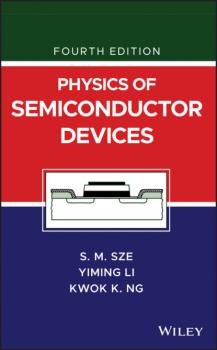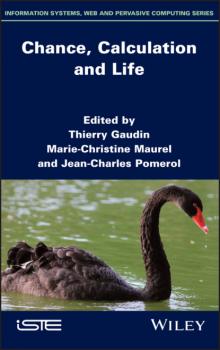John Wiley & Sons Limited
Все книги издательства John Wiley & Sons LimitedPolymer Nanocomposite Materials
Discover an authoritative overview of zero-, one-, and two-dimensional polymer nanomaterials Polymer Nanocomposite Materials: Applications in Integrated Electronic Devices delivers an original and insightful treatment of polymer nanocomposite applications in energy, information, and biotechnology. The book systematically reviews the preparation and characterization of polymer nanocomposites from zero-, one-, and two-dimensional nanomaterials. The two distinguished editors have selected resources that thoroughly explore the applications of polymer nanocomposites in energy, information, and biotechnology devices like sensors, solar cells, data storage devices, and artificial synapses. Academic researchers and professional developers alike will enjoy one of the first books on the subject of this environmentally friendly and versatile new technology. Polymer Nanocomposite Materials discusses challenges associated with the devices and materials, possible strategies for future directions of the technology, and the possible commercial applications of electronic devices built on these materials. Readers will also benefit from the inclusion of: A thorough introduction to the fabrication of conductive polymer composites and their applications in sensors An exploration of biodegradable polymer nanocomposites for electronics and polymer nanocomposites for photodetectors Practical discussions of polymer nanocomposites for pressure sensors and the application of polymer nanocomposites in energy storage devices An examination of functional polymer nanocomposites for triboelectric nanogenerators and resistive switching memory Perfect for materials scientists and polymer chemists, Polymer Nanocomposite Materials: Applications in Integrated Electronic Devices will also earn a place in the libraries of sensor developers, electrical engineers, and other professionals working in the sensor industry seeking an authoritative one-stop reference for nanocomposite applications.
Endodontic Materials in Clinical Practice
Endodontic Materials in Clinical Practice delivers a much-needed comprehensive and clinically oriented reference to the materials used in endodontic practice. It provides complete details on the properties of the materials required for specific techniques in order to help in the selection of the appropriate materials and improve patient outcomes. Comprehensive in scope and filled with helpful illustrations, the book covers endodontic materials used from the pulp to the root-end. In addition, the text considers the location and technique for each of the materials presented. Designed to be a practical and accessible reference, the book is organised by specific clinical procedure. Presents an illustrated guide to all materials used in endodontic practice Focuses on the clinical application for each material Explains why specific materials are used Includes information on how to select the correct material Considers locations and techniques in making material decisions Written for specialist endodontists and residents, dental material specialists, post-graduate students, general dentists, and dentistry students, Endodontic Materials in Clinical Practice is an essential resource for selecting the right materials for specific techniques.
Microsoft Teams For Dummies
Work seamlessly together with Microsoft Teams It was only a matter of time before Microsoft 365 built an actual virtual office. And Microsoft Teams is it, rocketing from 13 to 75 million daily users in a single year. The new edition of Microsoft Teams For Dummies gives you an in-depth introductory tour through the latest version of the app, exploring the many different ways you can chat, call, meet, work remotely, and collaborate with others in real time—whether you’re using it as an all-in-one tool for working from home or as an extension to your brick-and-mortar office. Available as a stand-alone app or as part of Microsoft 365, it allows you to work seamlessly with almost any other Microsoft app. The friendly onboarding provided by this book takes you from the basics of file-sharing, organizing teams, and using video to must-have insights into less obvious functionality, such as posting the same message to multiple channels, muffling background noise (useful if you’re working from home!), and choosing more than one feed to concentrate on when video-conferencing (allowing you to pay attention to the speaker and your team members at the same time). As well as clueing you in on how things work, you’ll also find advice on the most effective ways of using them, with best-practices recommendations and tips on integrating Microsoft Teams into your existing workflows. Set up the interface Communicate on chat and video, inside and outside your org Integrate Microsoft Teams with your other Office apps Optimize your approach to meetings, working across large teams, and more! Whether you’re using Microsoft Teams for work, within your family, or for a collaborative hobby, you’ll find everything you need to get everyone on the same page in the same virtual room.
Inverse Synthetic Aperture Radar Imaging With MATLAB Algorithms
Build your knowledge of SAR/ISAR imaging with this comprehensive and insightful resource The newly revised Second Edition of Inverse Synthetic Aperture Radar Imaging with MATLAB Algorithms covers in greater detail the fundamental and advanced topics necessary for a complete understanding of inverse synthetic aperture radar (ISAR) imaging and its concepts. Distinguished author and academician, Caner Özdemir, describes the practical aspects of ISAR imaging and presents illustrative examples of the radar signal processing algorithms used for ISAR imaging. The topics in each chapter are supplemented with MATLAB codes to assist readers in better understanding each of the principles discussed within the book. This new edition incudes discussions of the most up-to-date topics to arise in the field of ISAR imaging and ISAR hardware design. The book provides a comprehensive analysis of advanced techniques like Fourier-based radar imaging algorithms, and motion compensation techniques along with radar fundamentals for readers new to the subject. The author covers a wide variety of topics, including: Radar fundamentals, including concepts like radar cross section, maximum detectable range, frequency modulated continuous wave, and doppler frequency and pulsed radar The theoretical and practical aspects of signal processing algorithms used in ISAR imaging The numeric implementation of all necessary algorithms in MATLAB ISAR hardware, emerging topics on SAR/ISAR focusing algorithms such as bistatic ISAR imaging, polarimetric ISAR imaging, and near-field ISAR imaging, Applications of SAR/ISAR imaging techniques to other radar imaging problems such as thru-the-wall radar imaging and ground-penetrating radar imaging Perfect for graduate students in the fields of electrical and electronics engineering, electromagnetism, imaging radar, and physics, Inverse Synthetic Aperture Radar Imaging With MATLAB Algorithms also belongs on the bookshelves of practicing researchers in the related areas looking for a useful resource to assist them in their day-to-day professional work.
Renewable Integrated Power System Stability and Control
Discover new challenges and hot topics in the field of penetrated power grids in this brand-new interdisciplinary resource Renewable Integrated Power System Stability and Control delivers a comprehensive exploration of penetrated grid dynamic analysis and new trends in power system modeling and dynamic equivalencing. The book summarizes long-term academic research outcomes and contributions and exploits the authors’ extensive practical experiences in power system dynamics and stability to offer readers an insightful analysis of modern power grid infrastructure. In addition to the basic principles of penetrated power system modeling, model reduction, and model derivation, the book discusses inertia challenge requirements and control levels, as well as recent advances in visualization of virtual synchronous generators and their associated effects on system performance. The physical constraints and engineering considerations of advanced control schemes are deliberated at length. Renewable Integrated Power System Stability and Control also considers robust and adaptive control strategies using real-time simulations and experimental studies. Readers will benefit from the inclusion of: A thorough introduction to power systems, including time horizon studies, structure, power generation options, energy storage systems, and microgrids An exploration of renewable integrated power grid modeling, including basic principles, host grid modeling, and grid-connected MG equivalent models A study of virtual inertia, including grid stability enhancement, simulations, and experimental results A discussion of renewable integrated power grid stability and control, including small signal stability assessment and the frequency point of view Perfect for engineers and operators in power grids, as well as academics studying the technology, Renewable Integrated Power System Stability and Control will also earn a place in the libraries of students in Electrical Engineering programs at the undergraduate and postgraduate levels who wish to improve their understanding of power system operation and control.
A Handbook on Multi-Attribute Decision-Making Methods
Clear and effective instruction on MADM methods for students, researchers, and practitioners. A Handbook on Multi-Attribute Decision-Making Methods describes multi-attribute decision-making (MADM) methods and provides step-by-step guidelines for applying them. The authors describe the most important MADM methods and provide an assessment of their performance in solving problems across disciplines. After offering an overview of decision-making and its fundamental concepts, this book covers 20 leading MADM methods and contains an appendix on weight assignment methods. Chapters are arranged with optimal learning in mind, so you can easily engage with the content found in each chapter. Dedicated readers may go through the entire book to gain a deep understanding of MADM methods and their theoretical foundation, and others may choose to review only specific chapters. Each standalone chapter contains a brief description of prerequisite materials, methods, and mathematical concepts needed to cover its content, so you will not face any difficulty understanding single chapters. Each chapter: Describes, step-by-step, a specific MADM method, or in some cases a family of methods Contains a thorough literature review for each MADM method, supported with numerous examples of the method's implementation in various fields Provides a detailed yet concise description of each method's theoretical foundation Maps each method's philosophical basis to its corresponding mathematical framework Demonstrates how to implement each MADM method to real-world problems in a variety of disciplines In MADM methods, stakeholders' objectives are expressible through a set of often conflicting criteria, making this family of decision-making approaches relevant to a wide range of situations. A Handbook on Multi-Attribute Decision-Making Methods compiles and explains the most important methodologies in a clear and systematic manner, perfect for students and professionals whose work involves operations research and decision making.
Design and Development of Efficient Energy Systems
There is not a single industry which will not be transformed by machine learning and Internet of Things (IoT). IoT and machine learning have altogether changed the technological scenario by letting the user monitor and control things based on the prediction made by machine learning algorithms. There has been substantial progress in the usage of platforms, technologies and applications that are based on these technologies. These breakthrough technologies affect not just the software perspective of the industry, but they cut across areas like smart cities, smart healthcare, smart retail, smart monitoring, control, and others. Because of these “game changers,” governments, along with top companies around the world, are investing heavily in its research and development. Keeping pace with the latest trends, endless research, and new developments is paramount to innovate systems that are not only user-friendly but also speak to the growing needs and demands of society. This volume is focused on saving energy at different levels of design and automation including the concept of machine learning automation and prediction modeling. It also deals with the design and analysis for IoT-enabled systems including energy saving aspects at different level of operation. The editors and contributors also cover the fundamental concepts of IoT and machine learning, including the latest research, technological developments, and practical applications. Valuable as a learning tool for beginners in this area as well as a daily reference for engineers and scientists working in the area of IoT and machine technology, this is a must-have for any library.









